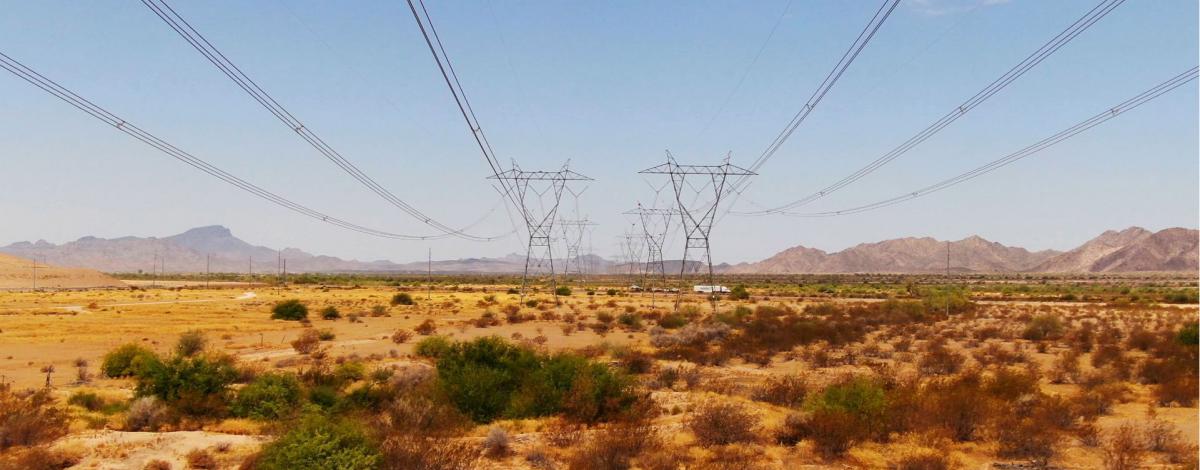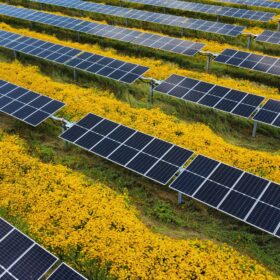The U.S. will need 47,000 GW-miles of new transmission by 2035, assuming moderate load and high clean energy assumptions “in line with the future power sector enabled by all currently enacted laws,” according to recent modeling studies reviewed by the U.S. Department of Energy (DOE).
That finding, representing 57% growth over the current level of transmission, is the median of model results from several capacity expansion modeling studies completed since 2020, and is presented in DOE’s draft report titled “National Transmission Needs Study.”
The DOE reported the median modeled amounts of transmission that will be needed in 9 of 13 geographic regions across the continental U.S., under both moderate and high clean energy scenarios, with the four remaining regions having adequate transmission. Under the high clean energy scenario, an additional 120 GW of “transfer capacity” between regions will be needed to achieve cost savings and reliability benefits “as clean energy deployment increases to over 80% annual generation,” DOE said.
The department said it will consider the report, once finalized, as an input to a separate process to potentially designate “National Interest Electric Transmission Corridors” under the Federal Power Act.
Draft findings of a separate “National Transmission Planning Study,” released by DOE last fall, modeled the added transmission needed to reach 100% clean electricity by 2035—a scenario selected as the core modeling assumption of that study. Preliminary findings showed that the highest density of needed transmission additions would connect the “wind belt” in the central U.S. with eastern demand centers.
In the draft transmission needs report just released, the DOE said that more than 1,400 GW of proposed generating capacity, mostly solar, wind, and storage, was “sitting in clogged interconnection queues” at the end of 2021. The “enormous amount” of renewables and storage in the interconnection queues “demonstrates that market and economic trends will lead to continued shifts in the nation’s resource mix, requiring a different approach to transmission planning and development,” it said.
Two other “key indicators” that more transmission is needed, the DOE said, are interregional wholesale electricity price differentials showing that lower-cost power cannot reach higher-cost areas, and that transmission investments nationwide have steadily declined since 2015.
Regarding non-wire alternatives, the report says that “strategically placed” generation near load centers, grid-enhancing technologies, energy storage and distributed energy resources could help lower the need for new transmission infrastructure. The DOE noted there is “some inclusion” of these solutions in the capacity expansion modeling results that it analyzed. The report does not mention flexible demand as a means to increase transmission utilization and reduce the need for new transmission.
The DOE invites comments on its draft report, titled the “National Transmission Needs Study,” with an upcoming webinar on the report scheduled for March 3, 1:30 p.m. EST.
This content is protected by copyright and may not be reused. If you want to cooperate with us and would like to reuse some of our content, please contact: editors@pv-magazine.com.








By submitting this form you agree to pv magazine using your data for the purposes of publishing your comment.
Your personal data will only be disclosed or otherwise transmitted to third parties for the purposes of spam filtering or if this is necessary for technical maintenance of the website. Any other transfer to third parties will not take place unless this is justified on the basis of applicable data protection regulations or if pv magazine is legally obliged to do so.
You may revoke this consent at any time with effect for the future, in which case your personal data will be deleted immediately. Otherwise, your data will be deleted if pv magazine has processed your request or the purpose of data storage is fulfilled.
Further information on data privacy can be found in our Data Protection Policy.